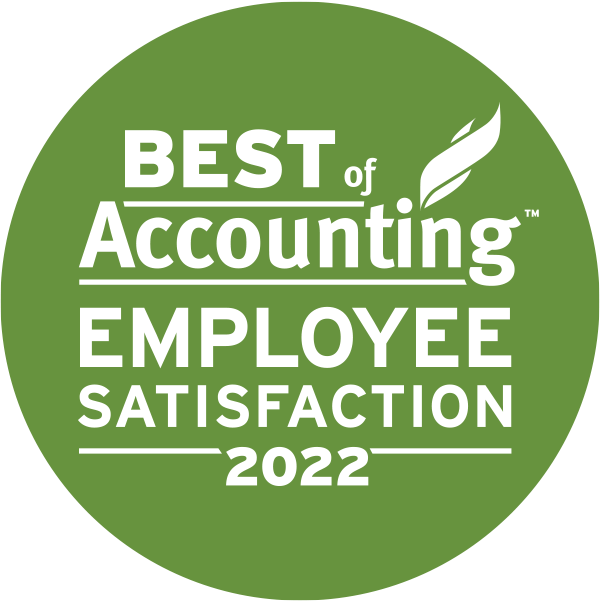Does your business hire consultants or subcontractors? If so, you probably don’t consider them to be your employees. However, Canada Revenue Agency might disagree and try to reclassify the contract as one of employment. Should that happen, the result could be time-consuming and expensive.
Why does CRA care?
Government revenues (i.e., taxes) are most often higher with an employer-employee relationship than with a subcontractor/self-employed arrangement. Therefore, Canada Revenue Agency usually argues that the arrangement is one of employment while the participants usually intend for independent contractor status.
The four main tax/payroll deduction areas that differ between the two arrangements are:
| Employer-Employee | Self-employed contractor | Effect | |
| Canada Pension Plan | Employer and Employee each contribute 5.95% of earnings, up to a maximum contribution of $3,754.45 (in 2023) for each party | A contractor pays 11.9% of business profits, up to a maximum of $7,508.90 (in 2023) | The total amount of CPP premiums paid remains the same – it’s just a matter of who pays them. |
| Employment Insurance | Employees pay 1.63% of earnings, up to a maximum contribution of $1,002.45, and employers pay 2.282% of earnings, up to a maximum contribution of $1,403.43 (in 2023). If an employee meets eligibility criteria, they should be able to collect EI benefits if needed. | Employment Insurance contributions are not required. Self-employed contractors are not eligible for regular EI benefits. They can voluntarily pay EI premiums to be eligible for unique benefits (i.e., parental, sickness, caregiver, etc.) | CRA will lose up to $2,405.88 of EI premiums with a self-employed contractor arrangement in 2023. The worker stands to lose the option of claiming regular EI benefits if they lose their job through no fault of their own and otherwise meet the eligibility criteria. |
| Income tax deductions for employment/business expenses | Tax deductions for employees are restricted. Even when they must pay their expenses, they can’t deduct anything relating to capital items like computer equipment and desk furniture. For all expense claims (except for the home office flat rate available in 2020, 2021, and 2022 due to Covid-19), the employer must sign off on form T2200 indicating that the employee is required to pay their expenses. | A self-employed contractor can deduct all reasonable expenses required for running their business, including capital cost allowance (aka depreciation) on capital expenses like computer equipment and office furniture. No additional sign-off is required – the contractor indicates that the expenses were required to run the business. | CRA will probably collect less income tax from a subcontractor than an employee, depending on the contractor’s expenses. |
| Income tax deductions for home office expenses, assuming eligibility criteria are met | Eligible employees can claim a portion of their home utility costs as a home office expense. They cannot claim home insurance or property taxes unless they earn commission income. | In addition to the expenses available for salaried employees, eligible self-employed contractors can claim a portion of their home office insurance, property taxes, and mortgage interest. | Because of the additional home office expenses that can be deducted as a contractor, CRA will likely collect less tax from a subcontractor than from an employee. |
What happens if CRA disagrees with the arrangement?
If CRA believes the arrangement to be one of employer-employee, they will reassess the paying business for the Canada Pension Plan, Employment Insurance, and income taxes that, in their view, should have been withheld from payments to the worker. Interest and penalties will also be added to the bill. Even if the worker has already paid their income tax and Canada Pension Plan premiums, it will not reduce the payor’s obligation.
This process will likely trigger a full payroll audit if one has not already begun.
Please contact your McCay Duff LLP advisor immediately if you ever receive a communication indicating that CRA is beginning an investigation into your business. If we assist you from the beginning, there is a better chance of resolving the issue before it progresses to the point of reassessment.
Other potentially expensive implications
There could be additional headaches and expenses beyond Canada Revenue Agency. Depending on whether employment legislation protections apply to your situation, you could be ordered by a court or labour board to pay the worker retroactively for statutory holidays, vacation pay, and other entitlements due to employees you were not obligated to pay when the consultant was an independent contractor.
It is vital to obtain proper legal advice when drafting contracts for independent contractors and employees to help avoid potential pitfalls. If you think your business could be at risk of owing back pay, please contact your lawyer for the next steps.
How can I minimize the chance of disagreement?
Ideally, the arrangement between your business and the worker so obviously points to independent contractor status that nobody argues about it. In reality, it’s rarely that clear-cut. The issue has been argued in court many times. The outcomes of past court cases give us an idea of how a current arrangement might be interpreted if your business ended up in the unfortunate position of having to argue with a tax auditor or a judge.
The Wiebe Door Services Ltd. case determined that no single factor can be used to indicate whether a worker is an employee or self-employed. Instead, the case established four central tests. These four tests are not an exhaustive list. The relevance and weight of each test depend on the specific facts and circumstances.
Test #1 – Control
A worker who has control over how they use their time and how the services are to be performed is more likely to be considered self-employed than one who must be available at specific times and do things in a certain way.
Accepting and declining work as the worker wishes also favours self-employed status.
Test #2 – Tools
When we hear the word tools, we often think of hammers and screwdrivers, but the concept applies equally to things like computers, software, and memberships to professional associations. If workers provide these things for themselves, they are more likely to be considered self-employed.
Test #3 – Opportunity for profit or loss
A worker paid for a specific project or task (rather than by the hour) can increase their profit by doing their job efficiently, hiring others to help, and/or keeping job costs low. They also risk losing money if costs are higher than anticipated or if something goes wrong with the job. This arrangement points more towards self-employment status.
This does not mean that workers who are paid hourly can never be considered self-employed. In the WCT Productions September 2022 court case, the workers in question were paid hourly but were still ruled as self-employed by the court. Because the workers had the freedom to work for more than one business, they could generate additional profit. Even though some of the workers only provided services for one company, that was by their own choice and not by a restriction put on them by the business paying them. The workers also had a risk of loss because they were not guaranteed additional work from future projects, and current projects could be cancelled at any time. The lack of holiday, vacation, or sick pay and being without medical and dental benefits indicated risks consistent with self-employed status.
Test #4 – Services performed – integral or accessory?
A worker providing ancillary services is more likely to be considered self-employed than a worker providing services that are integral to the business. This test is perhaps the most difficult one to apply as it is not always clear-cut whether something is integral. Even so, it is a factor the court has examined in some cases.
Consideration of intention
Some court cases have considered the parties’ intentions when deciding, primarily if the four tests above don’t provide clear answers. The best practice might be to discuss and document the intention of the business and the worker. Your lawyer can assist you in incorporating this into the contract.
Key takeaways
Having a self-employed contractor be reclassified as an employee can be onerous and costly. Your best chance of avoiding this situation is to ensure that the reality of the work arrangement reflects self-employment status using the four tests described above. To further strengthen your case, confirm and document the intentions of both parties concerning the arrangement. Most importantly, obtain proper legal and tax advice when drafting any contracts.
McCay Duff LLP in Ottawa for trusted business advisory strategies
Let the team of business advisors at McCay Duff LLP help you develop a strategy to take your business to the next level. We develop creative and efficient accounting, business advisory and tax solutions that help our clients achieve their financial goals. To learn more about how we can help you and your business, contact us online or telephone at 613-236-2367.





